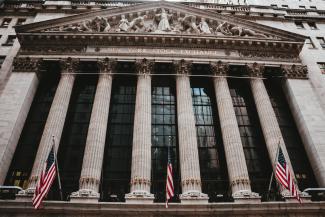
The Great Consolidation: A Look into The Last 3 Bank Crises
For most people reading this article, you have witnessed three banking crises in your life: Savings and Loans circa 1985, Great Recession in 2008 and Silicon Valley Bank failure of 2023. First, let’s dive into a quick recap on the history of banking regulation.
Post Great Depression, Congress passed the Banking Act of 1933, also known as the Glass-Steagall Act. This created the FDIC and prohibited speculative operations, separating banking from investment underwriting. Basically, banks were only allowed to be banks (think checking and savings accounts, CDs, and fixed annuities—all conservative financial instruments). For the next fifty years, banks operated with little drama and fanfare, almost like the local utility company.
In 1982, the regulations guiding Savings and Loans (S&Ls) were reduced and allowed for increased investments in commercial real estate and junk bonds. Three years later, the Savings and Loan crisis occurred due to excessive lending, deregulation, and bailout guarantees. Almost one third of the 3,234 S&Ls failed between 1986 and 1995. But still, deregulation continued, even after the passing of the Financial Institutions Reform, Recovery, and Enforcement Act (FIRREA) in 1989 that was supposed to restructure S&L industry regulations.
Then, the Gramm-Leach-Bliley Act was passed in 1999 to repeal portions of the Glass-Steagall Act that restricted affiliations between banks and securities firms. This paved the way for modern banking companies like JPMorgan Chase, who became a mega store of financial services: banking, credit cards, annuities, mutual funds, derivatives, structured notes, and investment banking were now all under one roof.
Fast forward to 2008, when the term “Too Big to Fail” entered our vernacular as the federal government bailed out the banking system to stop a greater financial crisis. Taxpayers “lent” billions of dollars to Citigroup, Bank of America, JPMorgan Chase, Wells Fargo, Morgan Stanley, and Goldman Sachs. Letting these financial behemoths fail would have collapsed our economy.
Moving onward to today, the recent regional bank failures of Silicon Valley Bank, Signature Bank, and First Republic Bank are a reminder of the vulnerability of our financial system. Even more concerning is how modest the current economic situation is. Yes, inflation is up, but that is a fairly mild impact that every bank should survive. The bank failures forced the Federal Reserve to enter the bond market to reduce upward pressure on Treasury bond interest. This creates a strange situation in which the Federal Reserve is both increasing interest rates to slow the economy and purchasing bonds to accelerate the economy.
Now we’d like to introduce a new phrase into your vernacular: The Great Consolidation. “Every failed bank that falls into [the] hands of industry’s giants contributes to [the] decades-long consolidation trend in [the] banking sector” tweeted Liz Ann Sonders, Managing Director and Chief Investment Strategist at Charles Schwab. Sonders is talking about the accumulation of bank closures and mergers we’ve seen since the mid-80s, and the fact that the downward trend of banks and branches continues today.
As you can see from the graph above, the number of commercial banks peaked amidst the Savings and Loan Crisis and never recovered. The U.S. has lost over 10,000 commercial banks between then and 2022. The number of total bank branches (shown below) didn’t peak until much later in 2009, but would lead to the closing of more than 13,000 branches by 2020 (around 14%) and another 4,000 would close due to the pandemic.
It is clear that banks are consolidating down into fewer megabanks with minimal branches and a focus on mobile banking. This means less services for those in rural areas and fewer local banks to choose from. Plus, fewer banks in the market equates to larger sums of assets held by each company. Do the words “too big to fail” come back to mind?
It is my opinion that now is the time to reintroduce the Glass-Steagall Act and break up the megabanks of today. This is certainly anti-capitalism, but so is the government insuring deposits and bailing out banks. Our economy would benefit from a rock-solid banking system supporting all small, medium, and large businesses. I liken this to the Eisenhower Interstate system; it provides an unequalled competitive advantage to freely move goods across the country, benefiting us all. Separating the megabanks from investment products will minimize the “too big to fail” moral hazard and protect the backbone of our economy from future banking drama.
What do you think? Are you concerned about your investments amidst the Great Consolidation and recent bank failures? Send us your comments in the message box at the bottom of the page or let us know if you would like to schedule a time to talk about your specific situation.

